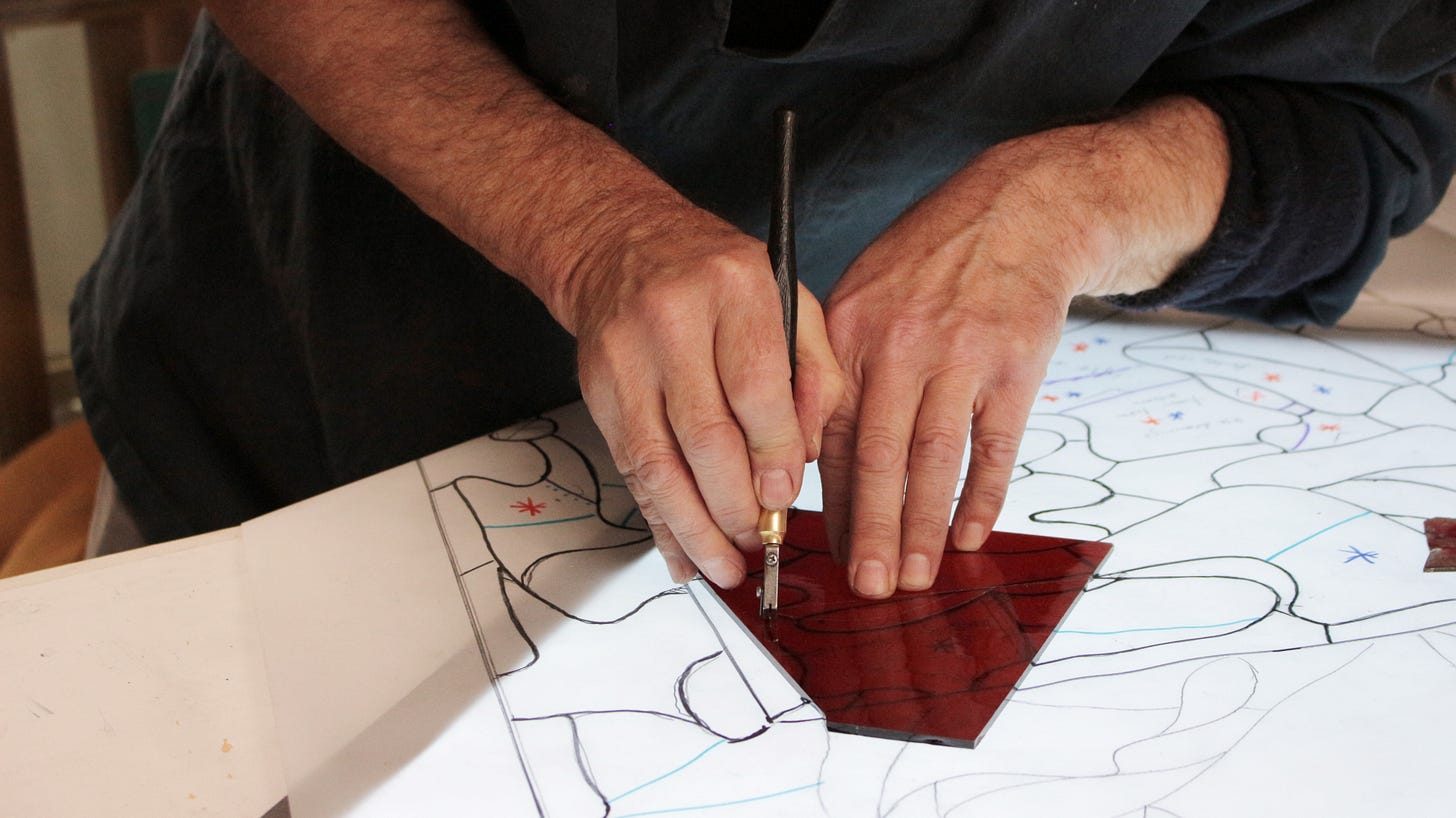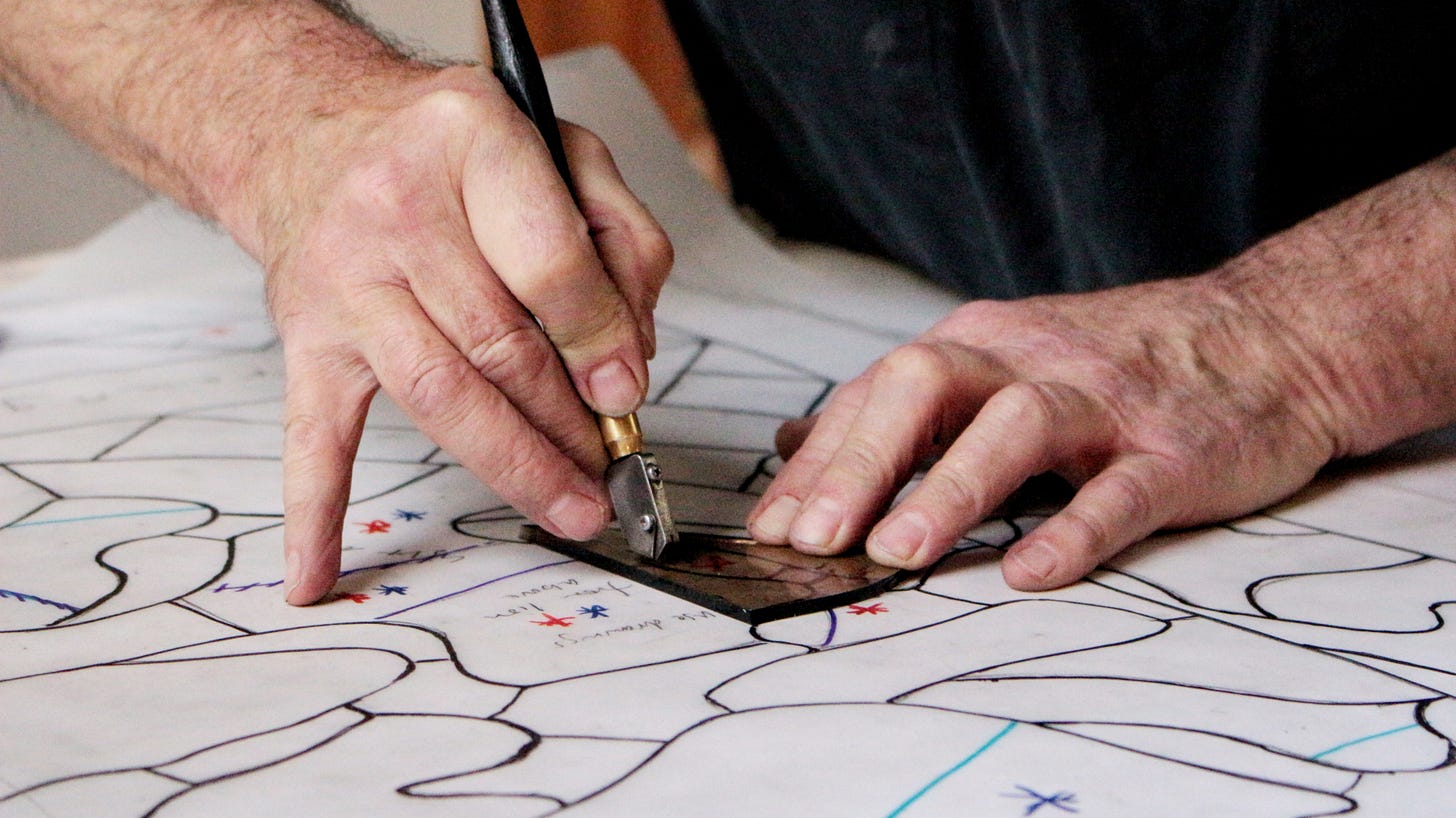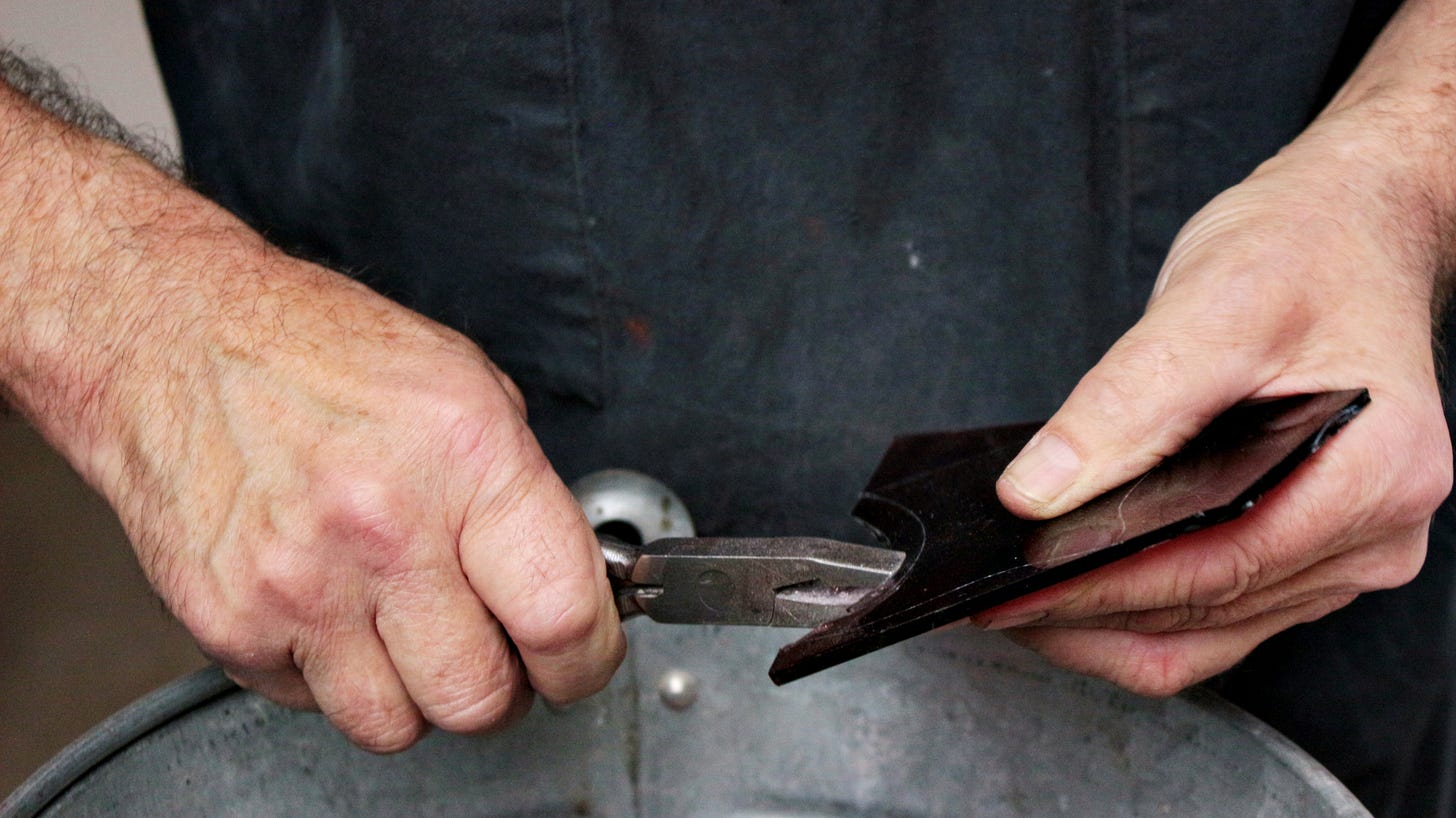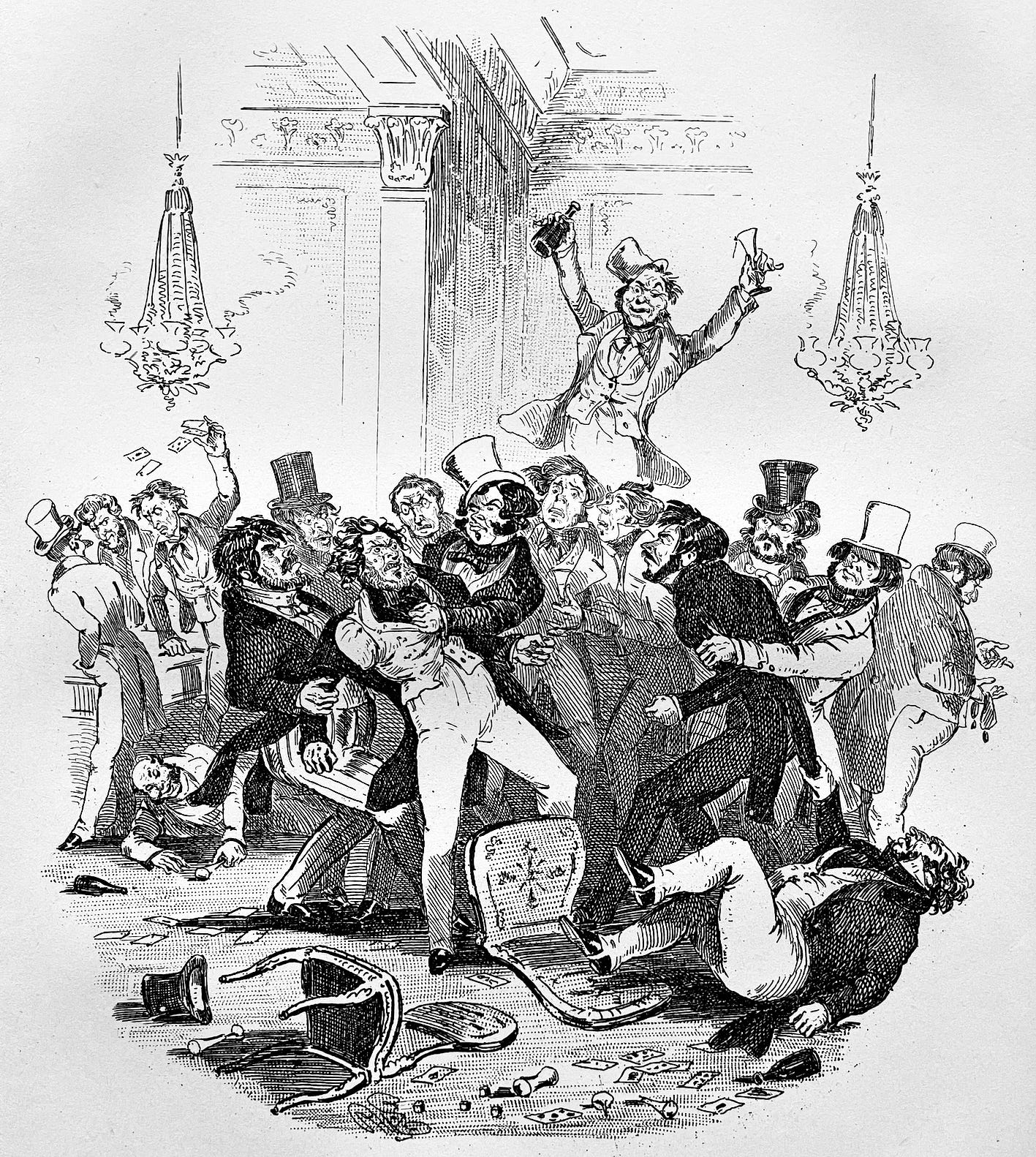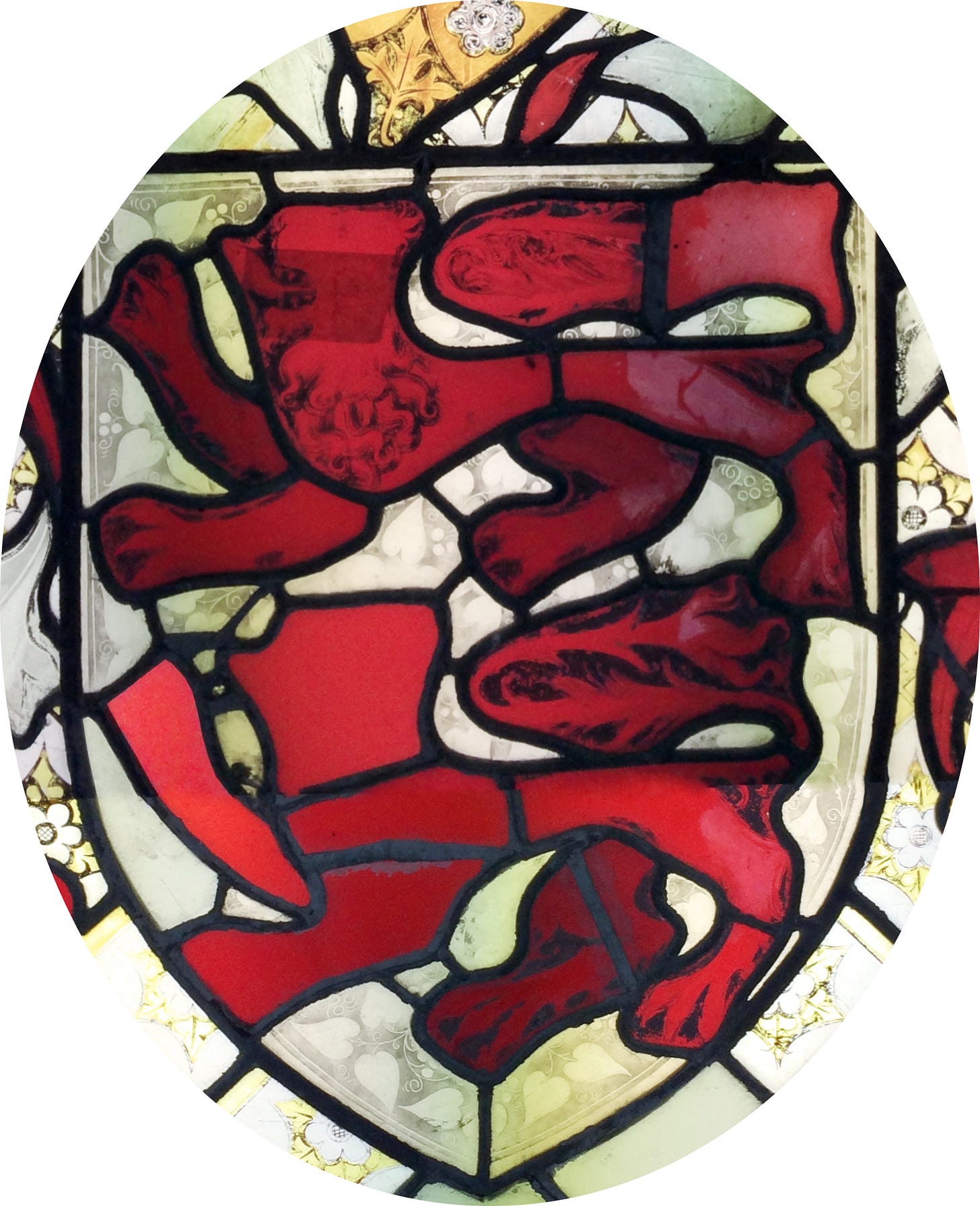This is a two-stranded sequence of letters. One strand concerns the key techniques of kiln-fired stained glass painting. The other strand concerns restoration.
Previously, on restoration …
We have inspected the window, catalogued the different kinds of intervention that will be required to make it beautiful once more, then rubbed and stripped it, and also made a plan to manage all our work efficiently — after all, this window is but one of 36.
It’s time we started to restore the ruined window to its former loveliness.
The first step, for all subscribers, will be to cut some glass and offer you ten observations on how we do it.
The second step, for paid subscribers only — it’s only equitable in the real sense, not the modern and manipulative meaning, that paid subscribers should receive a benefit — will be to draw the lion who wasn’t there.
Part 1: cutting
At the studio where I apprenticed, there were two signs by whose means a freshman always identified himself as such:
Although it was but a starvation-inducing pittance that he earned, the freshman expected he’d be paid on time. Even now, two decades later, his naivety, which I once shared, still provokes in me a bitter laugh.
The freshman always used that special breed of glass cutter which carries its own supply of oil. Yes, I once had one too. Bright red, it was: I imagined myself invincible like Ishmael with his harpoon aboard the Pequod, brave like King Arthur with Excalibur at Salisbury, or furious like Achilles brandishing his spear upon the plains of Troy. Those were the sweetest days of innocence. They could not last.
If sufficient time were ever given him, the freshman’s own disillusionment eventually resolved the first (it was just too painful to continue hoping he’d be paid), while curses from the paint shop more promptly cured the second.
I must be accurate: it was not the curses on their own, frightful though they were, even for that distant age when offensiveness was real.
No, the chief painter always took his case before the studio’s owner to complain. The freshman was then granted three days’ grace to mend his ways. Otherwise, like Luca Brasi, he’d be swimming with the fishes, or at any rate let go.
The cause: there are few things a glass painter deplores more volubly than streaks of oil upon the glass he is supposed to paint.
Oil, like every villain from every slasher movie you’ve ever seen, is never cowed, never defeated, never beaten, outplayed or overcome. Oil always returns, it always seeps up from some invisible and unwholesome fissure somewhere in the glass.
And, if there’s one thing you should know about a freshman, it’s that he hasn’t learned to regulate his oil. Simply put, the freshman’s cutting isn’t good enough but that he needs oil, and pints of it, to execute the simplest cut. (I do not allocate blame. I simply report a fact, albeit with a measure of hyperbole and with the disagreeableness which sometimes comes with age.)
It follows that the freshman, from the moment he put oil-spurting cutter to virgin glass, was on collision course with the painters who were the kowtowed-to, red-carpeted, canapé-stuffed and promptly-paid celebrities of studio-life.
In such a battle — newborn babe against apex predator — it was a foregone conclusion who would win.
Therefore there was never any other option: the freshman, if he wished to survive, not just ill-paid but likely unpaid for several months, had to set aside his brightly coloured oil-discharging cutter, and instead take up one like this which he could lubricate as needed by tapping it several times a day upon an oily cloth or — timid readers, block your ears — with spittle:
There’s one other necessary tool we must introduce: a strong pair of pliers with which to snap and nibble the glass, and also groze its edges.
Oh, I know, I know: there’s a school of thought which condemns nibbling with the same thrilling fervour as animated the minds of those who passed sentence on Giordano Bruno and Hester Prynne. But I’m not one with them. Your pliers are shaped the way they are that they might snap …
… and also nibble:
I must now confess in order to get it off my chest and explain my bitter mood that it was a singularly foul-mouthed and ill-mannered herd of brutes which I apprenticed with, in particular the studio foreman and his lieutenant.
Each time one of us approached the grinder, these brutes jeered and booed and shrieked obscenities. Only the bravest souls (or those doing copper-foil who were anyway derided as un-manly: yes, yes, it’s ridiculous, but I narrate no less than the truth, and offensiveness in that distant time was often real) dared to turn the grinder on and use it. The rest of us learned to stay at our workbench, and nibble. We nibbled like our lives depended on it. With practise, we acquired skill.
If only as concerns this single matter, the foul-mouthed, ill-mannered brutes had a point. Therefore their harsh lesson still features in my memory: it’s fine to nibble — just be sure to sweep up afterwards, which, no surprises there, the ill-mannered brutes always failed to do. I was a happy man indeed when time came for me to leave that studio and make my own fortune in the world.
Neither scopolamine nor midazolam could induce me to teach anyone how to cut glass: I just don’t know enough.
I will, however, list several observations which you will find demonstrated in the first video today.
Except for simple pieces — which the lion you are about to see is not — first trim and snap the glass approximately to size, if possible giving yourself at least one edge by means of which to align your resized glass to cut-line: then proceed to work the detail.
When cutting, lean over and look down from above.
Stand in such a way that you can easily move your body, especially your arm and wrist. Be ready to curve and twist as if you were a skater.
Ill-use might harden your fingertips, but the fleshy valley between index finger and thumb will remain forever soft and ready to be slit: therefore, when you grip your glass to snap or nibble it, pay special thought to where your hand is tender.
Un-snapped cuts of glass seize up: therefore, promptly snap whatever can be snapped.
Snap from your wrists or arms, not with your fingers.
Then, when it’s time to tap, hold the glass at such an angle that you can see the cut: your eyes will learn to follow the cut’s run, and observe it chasing. At which time you can cease tapping there, and tap elsewhere.
I write “tap” but really it’s a controlled strike: your fingers guide and pursue your cutter right to its target.
Nibbling — the detractors call it “chewing” — is a messy business. Do it above a waist-height dustbin so the detractors have less cause to grumble.
I’ve saved the best (worst?) for last: as indicated earlier, although perhaps you did not believe me, some people use spit to lubricate their oil-less cutter. See what happens at 1 minute 15 seconds or thereabouts: it’s appalling. David then compounds his crime and wipes his cutter on his smock — but actually it’s my smock, he borrowed it. Do you wonder it’s always me who does the filming: would you trust this person with your phone?
There, you’ve granted me time and space to have my say. Here’s some moderately fancy cutting and nibbling for you in recompense. There’s no commentary. This is because I’m so ill-tempered from the unwanted memories of my apprenticeship, it would not be fair to unleash my spoken words on you; the written ones are already irritable enough though I have gone to unsung heroic lengths to soften them considerably.
It’s the head, chest and left leg of the lower lion, above, which David is about to cut. You can click the full-screen icon if you should wish to. And remember to watch what happens avert your gaze at 1 minute 15 seconds or thereabouts — the incident is devilishly, mercifully quick.
Now it’s time to prepare the drawing of the lion we do not have because, without a drawing, the glass painter would be ill-advised to start unless he painted lions every day, which we know he doesn't.
How shall we prepare the drawing, do you think? Please don’t complain the next video is for paid subscribers only: it takes a lot of time to write these letters and make the films.
Part 2: drawing
Keep reading with a 7-day free trial
Subscribe to The Glass Painter's Method to keep reading this post and get 7 days of free access to the full post archives.





